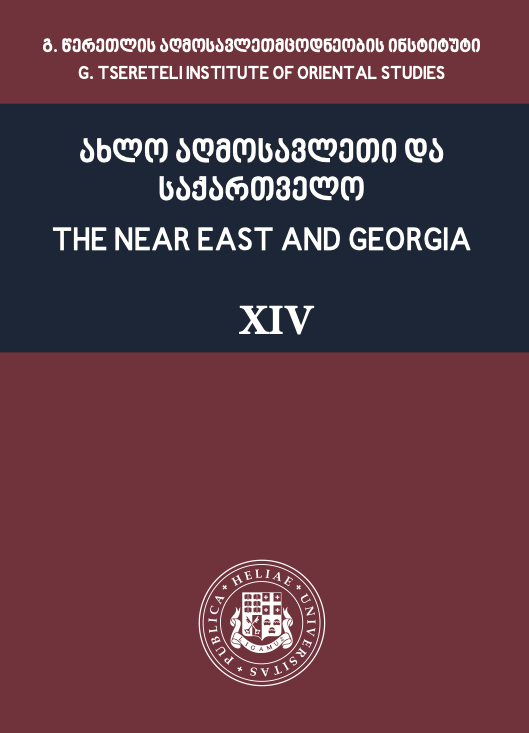CHARITABLE ACTIVITIES OF IRANIANS IN TBILISI (TURN OF 19TH-20TH CENTURIES)
DOI:
https://doi.org/10.32859/neg/14/198-206Keywords:
Iranian consulate, Mirza Reza Khan Arfa ad-Dowleh, Mirza Mahmud Khan Ala al-Molk, Etefaq-e Iranian, Bahman MirzaAbstract
In the nineteenth century, the charitable activities of the Iranians were mainly carried out on the initiative and efforts of the Iranian consulate in Tbilisi and its consul generals. Welfare work that aimed at helping poor Iranian residents of the city has two major directions, health care and education. Initially, the charity was occasional, caused by particular challenges. Examples of such charity were the construction of hospitals for Iranians in Tbilisi during epidemics of pestilence in 1878/79 and cholera in the 1890s. Both foundations were initiated by consul generals, Mirza Mahmud Khan Ala al-Molk and Mirza Reza Khan Arfa ad-Dowleh respectively, and supported by wealthy Iranians.
The situation changed in the early twentieth century when the welfare work among Iranians in Tbilisi became better organized and the first charitable associations were established. In 1904, the Society for the Assistance of Indigent Iranians was founded and in 1905, the charitable society of Tbilissian Iranians known as Etefaq-e Iranian (Alliance of Iranians). In 1907, the latter opened a madrasa in the Muslim district of Tbilisi.
Among the Iranians of Tbilisi, the descendants of the political emigrant Qajar Prince Bahman Mirza were distinguished for their charitable activity. General Amir Qasem Mirza was elected a honourable member of the charitable organization of the Muslims of the Caucasus while his wife Gouhar Khanum established and led the charitable society of muslim women. By the efforts efforts and financial support of the members of the Bahman Mirza’s family members Muslim primary schools in Tbilisi and other regions were opened, where the study for the poor families’ children was free of charge. The contribution of Bahman Mirza’s son, general Amir Qasem Mirza (1853-1920) and his family’s members in establishing such educational institution was extremely important.
Women of the Bahman Mirza’s family were distinguished by the high degree of the emancipation even among Muslims of Tbilisi. Majority of them wore European clothes and they appeared in public places without chador. Probably, in this sense the circle to which Qajars belonged, played an important role. There were families of the famous writer and public figure Mirza Fatali Akhundov and the merchant of the first guild Aqa Alesker Ismailov. Bahman Mirza’s family had marriage alliance with them. Two sisters of Akhundov and three daughters of Ismailov were Qajar princesses.
It is not surprising that Aqa Alesker Ismailov’s daughter and the wife of Qasem Mirza Qajar Gouhar Khanum was the founder and Chairwomen of the ‘Muslim women charitable organization’, established in 1910.
The WW1 and the political-social crisis connected with it caused the decline of the charitable activities. The situation worsened by the Russian revolution and the emigration of rich people, among them Iranians, from Tbilisi. After the war the charitable organizations resumed their activities.




